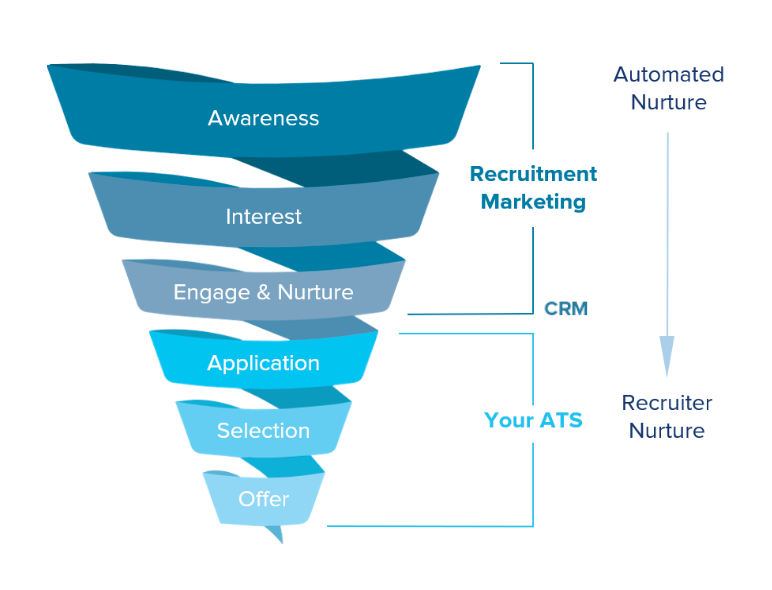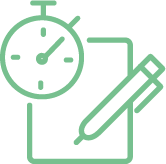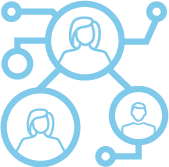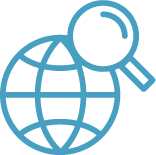Last year, 61% of companies spent more on their recruitment CRM software than on their ATS, and a staggering 1 in 4 companies are looking to upgrade their recruitment technology stack this year.
It’s no surprise. Many companies find it difficult to attract the talent and skills they need to be competitive. In fact, 40% of CFOs say skills shortages are the top constraint to achieving their company’s goals, according to our research.
But thanks to modern-day hiring tools, it doesn’t – and shouldn’t – need to be this way.
When talent acquisition teams shift from reactive to proactive recruitment using marketing automation software, they can divert more time and resources into nurturing the right people into the business.
But first, there’s one huge misconception about candidate relationship management and applicant tracking software that needs to be cleared up.
Which is better – recruitment CRM software or an ATS?
It’s actually a trick question.
Many people don’t think they need an ATS if they use a CRM – and vice versa.
But while a CRM is a powerful recruitment marketing tool when used alone, it’s more efficient when paired with an ATS. It’s also important to take insights from the entire candidate journey rather than just focusing on improving one aspect of hiring. OrganisationsOrganizations that find more ways to maximise their use of time will always have a competitive advantage.
So, what’s the difference between a recruitment CRM and an ATS?
The two systems work at different stages of the candidate journey: one before, the other after a candidate hits ‘apply’.
The CRM is a powerful segmentation tool that automatically nurtures talent and delivers an engaging experience for passive candidates and active jobseekers. In contrast, the ATS is an applicant repository, workflow automation, and compliance tool used by recruiters and hiring managers.

To put it simply, both a CRM and ATS are equally important in delivering the functionality needed to build quality talent relationships with less recruiter effort.
What is CRM software used for in recruitment?
The recruiting CRM is a recruitment marketing tool and pre-apply capability that sits just above the ATS to help organisationsorganizations engage and nurture future talent. Here are some common use cases:
Candidate nurture
Just as marketers use a CRM to manage the relationship with their customers throughout the buyer journey, recruiters can use the same software to build relationships with candidates throughout the recruitment journey.

SMS job alerts and emails keep candidates interested and informed. And preset nurture flows and automation enable recruiters to maintain a positive experience with quality talent anytime, anywhere. Some companies even use chatbots to help candidates seek out the information they need or answer questions around salary expectations or role requirements.
Proactive recruitment
When talent teams think of proactive recruitment, they often think of social media advertising and reaching out to candidates one by one. But proactive recruitment should never be a frantic search. It’s more about nudging interested candidates in the right direction and keeping them warm. This type of proactive talent attraction can help build and maintain a more sustainable talent pipeline. (It also gives talent teams more time back in their day for high-value activities that support a better candidate experience.)
The secret sauce? Intelligent careers sites.

AI-powered content management systems allow companies to build and easily edit job listings and showcase their employee value proposition (EVP) and employer brand with dedicated landing pages.
Once the smart careers site captures the interest and details of enough passive candidates (from multiple sources), the CRM ensures they’re ready to engage when the right position becomes available. If you’re hiring for hard-to-fill roles, this is how it’s done!
Analytics
Recruiters no longer have to rely solely on instincts to make content and sourcing decisions. With sophisticated candidate relationship management, jobseeker activity and interaction data are captured and used to build rich candidate profiles. Some CRMs even deliver smart recommendations that highlight the best sourcing channels, candidates that best fit the job criteria (candidate scoring), and uncover hidden talent along the way.

With a 360-degree view of the talent pipeline, recruiters can even use internal mobility and alumni rehire strategies to develop their talent bench strength. This kind of data can save organisationsorganizations thousands of dollars in sourcing costs.
Who uses recruitment marketing and CRM software?
Recruitment marketing and candidate relationship management software are still relatively new to most organisationsorganizations. But they’re fast becoming preferred recruitment tools for savvy talent acquisition teams and employer branding specialists.
Many top employers and Fortune 500 companies have already transitioned to a talent-meets-marketing strategy to differentiate themselves in the job market and win the best talent.
Teams are adopting modern recruitment marketing or CRM software to analyse pipelines, optimiseanalyze pipelines, optimize sourcing channel investment and support new, more effective strategies such as:
- careers sites, social channels and talent networks,
- search engine optimisationoptimization (SEO),
- content creation for jobseekers,
- employer branding,
- mobile-friendly candidate experiences,
- high-touch lead nurturing and,
- personalisationpersonalization throughout the candidate journey.
Infographic: What an effective recruitment marketing campaign looks like from start to finish
Why do I need applicant tracking software?
Once a candidate applies for a position, their information is automatically fed into an applicant tracking system for the next stage. The ATS enables hiring teams to manage applications faster and deliver an engaging, consistent and personalisedpersonalized candidate experience at scale. Here’s where the ATS delivers value:
High-volume recruitment
If the last 12 months have shown us anything, it’s that talent scalability is fundamental regardless of whether we’re freezing, furloughing, or ramping things up.

There’s no faster or more efficient way of bringing in high volumes of candidates – from the ‘apply’ to ‘offer’ stages – than an ATS. With recruitment workflow automation and powerful analytics, talent teams can move selected candidates from application to offer and complete the required background, reference, and employment history checks pre-offer.
Read: Running effective campaigns at-scale: A how-to guide in times of change
DecentralisedDecentralized recruitment
A decentraliseddecentralized recruitment model focuses on the needs of hiring managers as well as recruiters. Many large and enterprise-level companies shift some of their recruitment responsibilities to remove friction between the two parties and directly connect hiring managers to their ideal employees. It also helps streamline processes, speed up decision making, and adds a personal touch to the candidate experience.

With the right ATS, organisationsorganizations can create, maintain and collaborate on documents in real-time, and ensure total alignment between hiring managers and recruiters.
Compliance
Boring tasks are important. And with the help of an ATS, hiring teams keep doing the boring things without getting bored.
Applicant tracking software lets recruiters keep a record and build custom reports that make hiring decisions quick, easy, and accessible for all. Managing these processes through an ATS saves valuable time and money by reducing human error, double entry, paperwork, and selection bias. It’s also an essential tool for enterprise-level companies looking to mitigate risk and prove ROI.

Good systems are kept up-to-date by automatically rolling out any updates behind the scenes. Compliance mandates are constantly changing, which is why navigating new regulations can be a real headache without automation.
And the journey repeats
Once the best-fit candidate has accepted a job offer through the ATS, all other future-fit candidates are on top of the recruiter’s list for next time. Their details are then fed back into the recruitment marketing system to ‘keep warm’ in the CRM for future opportunities.
Which is the best CRM recruitment system or ATS?
With a whole host of talent technology solutions out there, it’s not easy to choose the right ATS and CRM for your business.

An easy way to approach it is to think about the key selection criteria for your organisationorganization. Eventually, your team will need to put forth a request for proposal (RFP) document for a talent acquisition vendor. So outlining the key features and functions you need to optimiseoptimize your unique hiring process and win top talent is a good exercise.
The 5 most important factors to consider when upgrading your recruitment technology stack:
 1. Functionality
1. Functionality
Recruitment teams are constantly looking for new ways to be more efficient. Sometimes there’s a need to keep up with seasonal spikes or attract hard-to-find talent. Other times there’s a need to cut sourcing costs. Finding a vendor that can support your unique company objectives is crucial.
With PageUp’s unmatched depth of functionality, we’ve helped customers all over the world streamline complex volume and specialist recruitment practices. We listen carefully to our customers and offer holistic solutions (not just the software) so that everyone can use PageUp to its full potential.
 2. Customer support
2. Customer support
Many hiring teams make the mistake of upgrading their talent acquisition tech stack but never realiserealize their investment’s full value.
Unlike other vendors, PageUp delivers on its promises. With 24/7 premium support and a dedicated Customer Success Manager, we work closely with you to solve your team’s challenges (even long after implementation). Because good recruitment software is nothing without great customer support.
 3. Scalability
3. Scalability
Without software that’s fully scalable, running an effective recruitment campaign is expensive and time-consuming and may overlook the nuances of your hiring needs. Always look for a system that can manage bulk applications, offer powerful filtering and candidate segmentation, and automate candidate assessments and communications.
 4. Configurability
4. Configurability
Some applicant tracking or recruitment marketing systems are sold as rigid out-of-the-box solutions. The best solutions are highly configurable – meaning they work flexibly to support a range of different workflows and industries – depending on the organisation’sorganization’s recruiting challenges. Consider a vendor, like PageUp, that adopts a partnership approach to help you maximisemaximize system features to get the best results.
 5. DecentralisationDecentralization
5. DecentralisationDecentralization
As mentioned earlier, organisationsorganizations now realiserealize that a decentralisedDecentralized recruitment model works better for the entire business. It allows hiring managers to quickly select candidates based on their local knowledge and branch criteria.
It even empowers operators across different functions to access the information they need independently: whether it’s a hiring manager, member of IT/Security, or faculty member for higher education. PageUp’s cloud-based system is easy for everyone to use.
If you’d like to learn more about PageUp talent acquisition software and the problems we solve, get in touch for a free demo today.
PageUp is a powerful talent acquisition platform with unique capabilities to transform hiring experiences. Our Recruitment Marketing, Recruitment Management and Onboarding tools enable businesses to seamlessly find great team members that help drive the outcomes they need to be competitive. It’s the hiring technology you’ve been dreaming of.
The post Recruitment CRM or an ATS: is one really better than the other? appeared first on PageUp.
